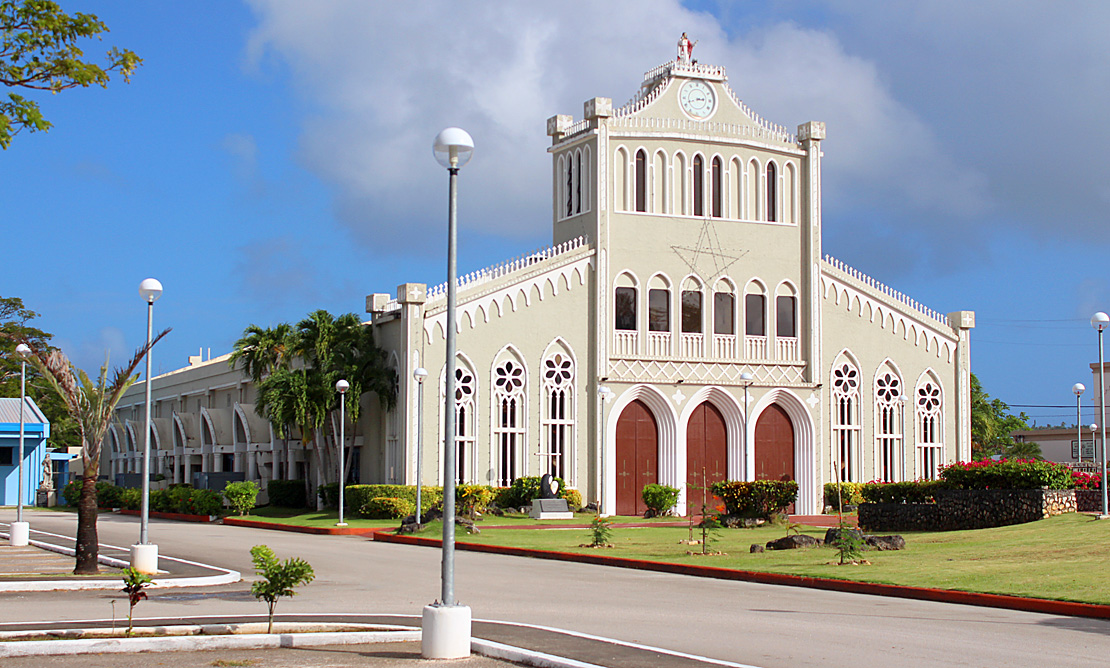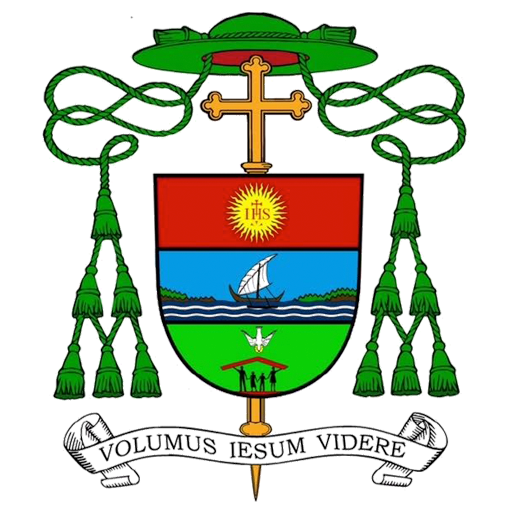
OUR LADY OF MOUNT CARMEL CATHEDRAL PARISH
Serving the Catholic Christian Communities of Chalan Kanoa and Susupe


Roman Catholic Diocese of Chalan Kanoa
Telephone 1 (670) 234-3000
Email: info@rcdck.org
Diocese of Chalan Kanoa
P.O. Box 500745, Saipan MP 96950

Serving the Catholic Christian Communities of Chalan Kanoa and Susupe
Rector: Rev. Fr. Rey D. Rosal
Deacon Assistant: Deacon Rosiky Camacho
Pastoral Associate: Sr. Emma O. Lusterio, SJBP
Parish Employees/Staff
SCHEDULE OF LITURGICAL CELEBRATIONS
Sunday Masses:
6:00 a.m. (Chamorro)
9:00 a.m. (English)
11:00 a.m. (Filipino)
5:00 p.m. (English)
Weekday Masses:
Monday - Saturday: 6:00 a.m. (Chamorro)
First Monday: Cemetery 5:30 p.m. (Chamorro)
Wednesday: 6:00 p.m. (English)
Request for Masses (e.g., Funeral Celebrations, Wedding and Death Anniversaries. Special Events, etc.) to be celebrated at other time can be arranged in advance with the Rector or Parochial Vicar.
Chairperson: Christopher S. Tenorio
Vice-Chairperson: James DLG. Sablan
Secretary: Melanie T. Agulto
Office Hours in the Chancery
Monday to Saturday 9:00a.m. to 12:00 p.m
1:00 p.m. to 4:00 p.m.
Address: Mt. Carmel Rectory, Chalan Kanoa
P.O. Box 500745 CK, Saipan, MP 96950
Telephone: (670) 234-3000/6177/8888/235-3600/3601
Fax: (670) 235-1539
The very first Mt. Carmel Church in Saipan, known as Guma’ Yu’us Bithen de Carmen, was originally located in mid-Garapan from 1907 through 1944, the year of WW II. This Church was left in ruins by U.S bombs intended to destroy Japanese supplies stored in the Church. After the war, people on the island began to make their way towards Chalan Kanoa. Scraps of materials from the old Church were salvaged to construct another Church elsewhere in the island. Under the spiritual guidance and leadership of Father Jose Tardio, S.J. and Brother Gregorio Oroquieta, S.J. Chalan Kanoa was decided to have the best spot for the new Church. In 1947, the Father Ferdinand Stippich, O.F.M. Cap., in efforts to begin planning and construction, asked the late Joaquin SN. Cabrera, Jose C. Cruz, Joaquin Kaipat and Juan A. Sanchez to survey the land. The architectural design was also in the making with thoughts and ideas revolving around the old structure; the people wanted it no other way.
Meanwhile, the people contributed their physical labors to secure a temporary place of worship (namely, the old Saipan Mayor’s Office originally located next to the Chalan Kanoa Post Office) pending the completion of the new Church. June 7, 1947 was the very first day of actual construction work to build the Mt. Carmel Church. The construction of the Church was first headed by the late Manuel Duenas Pangelinan. Following some progress, Mr. Pangelinan was unable to continue as head of the project, and the late Francisco Muna Deleon Guerrero took over and worked on through the Church’s completion in 1949.
The late Juan A. Sanchez also played a major role in the construction efforts. Others who worked in building of the Church, whose names also deserve to be mentioned, are: Mariano Aldan, Vicente Aldan, Francisco Baza, Jose Baza, Indalecio Cruz, Frederick Dela Cruz, Benigno Kaipat, Tomas Rios, Pedro Rogolofoi, Jose Romolor, Ador Roppul, Jose A. Sanchez, Antonio Selepeo and Jose Selepeo.
Nearing the Church’s completion, Father Ferdinand set out to search for a statue of Our Lady of Mount Carmel on the island, but to no avail. A statue of the Sacred Heart of Jesus, originally pledged to be placed on the highest mountain on the island as a gesture of gratitude to our Lord for protection, safety and freedom from the war, was then placed atop the front tower of the new Mount Carmel Church. The statue since its placement withstood fiercest weathers which have passed over the last 41 years, including Super typhoons Jean (1968) and Kim (1986).
The Church was blessed by the late Bishop Baumgartner and opened to the faithful on December 14, 1949. Through the growth of the people’s faith made evident to the growth of the villages and their Churches as well, Mt. Carmel Church was upgraded to Mount Carmel Cathedral on November 8, 1984 and simultaneously announced the establishment of the Diocese of Chalan Kanoa, separate from that of Guam.
The Mount Carmel Cathedral stands as a monument of the work, dedication and tireless efforts of our parents who built it with happy labor from its foundation on up to the roof and façade at a time in our history when they, too, were rebuilding their lives destroyed by a war in which they were innocent bystanders. It represents the familial and spiritual strength of the Chamorro and the Carolinians who have not only survived the destruction of their islands but have also lived as a happy people as they sailed through the rough seas of life’s adversity.